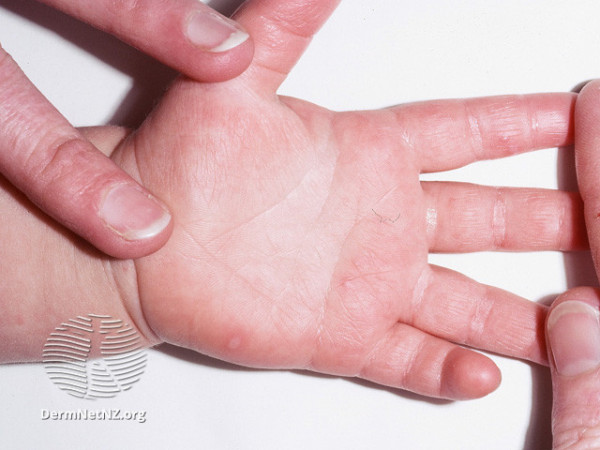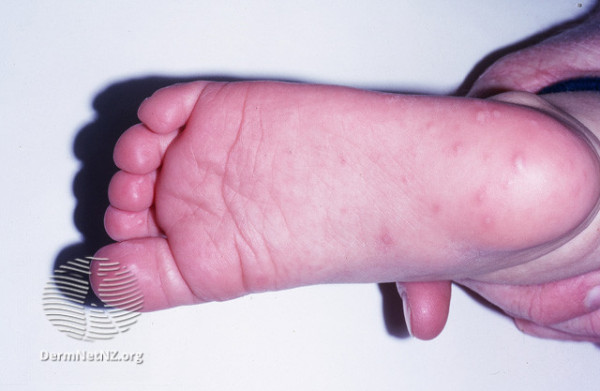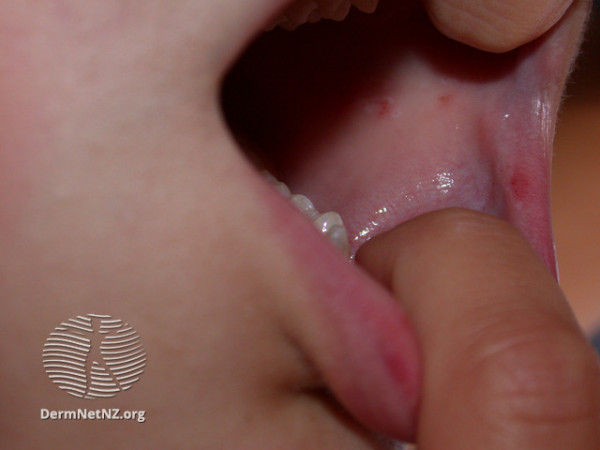How hand, foot and mouth spreads
Your child can catch the disease by:
- breathing in droplets from a person with the illness who is coughing or sneezing
- contact with mucus, saliva, blisters or the poo (faeces) of an infected person
- touching infected objects like toys and then putting their hands or toys in their mouth.
Hand, foot and mouth is most contagious in the first week of the infection, before the blisters dry. It is relatively uncommon for adults to catch hand, foot and mouth. It is most contagious in young children.
Hand, foot and mouth disease is more common in the warmer months – summer or early autumn, though it can occur at any time of the year.
Tamariki can catch hand, foot and mouth more than once, because several viruses can cause the disease.
Symptoms
Symptoms often start 4-6 days after infection with the virus. Tamariki are usually mildly unwell for 3-7 days with blisters lasting around 7-10 days. Most common symptoms include:
- Painful red blisters inside and around the mouth
- Red or fluid-filled blisters on hands, feet, bottom or elsewhere on the body (blisters on the body are not usually itchy or painful)
- Fever (this can happen 1-2 days before the other symptoms appear)
- Loss of appetite or refusing to drink fluids due to mouth discomfort
- Tiredness
- Sore throat
Below you can see some images of typical blisters on the hands, feet, and in the mouth from hand, foot and mouth disease.

(DermNet NZ)

(DermNet NZ)

(DermNet NZ)
Treatment
Hand, foot and mouth disease is a viral illness so there is no specific cure. While your child is recovering there are some things you can do to keep them comfortable:
- Avoid offering sour, salty or spicy foods if their mouth is sore
- Offer plenty of cool liquids to keep them hydrated
- Offer older children ice blocks to help with the sore mouth and keep them hydrated
- If your child is miserable with hand, foot and mouth disease, you can give them paracetamol. Follow all dosage instructions on the bottle as it is dangerous to give more than the recommended dose. Never give your child aspirin as this may increase the risk of Reye’s syndrome, which is a rare and serious illness.
To prevent the spread of hand, foot and mouth in your home or to others, follow good hand hygiene and keep your child home until they are well, and all blisters have dried.
Preventing the spread of hand, foot and mouth
Hand, foot and mouth spreads very easily so extra precautions are recommended to prevent the spread of infection within your home and to others:
- Keep your child at home if they are unwell or have blisters that have not dried up
- Clean hands with soap and water often, particularly after:
- toilet use
- nappy changes (virus can be found in poo (faeces) for several weeks) and
- when touching objects and toys that tamariki put in their mouth.
- Avoid sharing personal items such as cutlery, drinking cups, towels, toothbrushes
- Keep blisters clean and leave them to dry naturally - do not pierce or rupture blisters
- Disinfect surfaces and common areas and regularly clean toys
- Wash clothing, bedding, and any other soiled items on a hot cycle
- Teach your child to cough and sneeze into their elbow – if using tissues, throw them in the rubbish immediately after use.
When to visit a doctor or nurse practitioner
Call PlunketLine or take your child to the doctor or nurse practitioner if your child:
- Is unable to drink due to pain in the mouth
- Is having less wet nappies (or less than 4 wet nappies in 24 hours)
- Has a fever (temperature over 38 degrees C) and is less than 3 months old, or a fever lasting more than 3 days
- Seems very sleepy
- Is getting worse or not getting better after a few days
Pregnancy and hand, foot and mouth disease
Hand, foot and mouth disease rarely spreads to adults so the risk of getting hand, foot and mouth in pregnancy is low. While the risk of complications in pregnancy also remains low, there is a rare chance of miscarriage, so it is important to talk to your doctor or midwife if you are pregnant and think you have caught the disease.
Hand, foot and mouth disease
Last updated: 4 July 2025